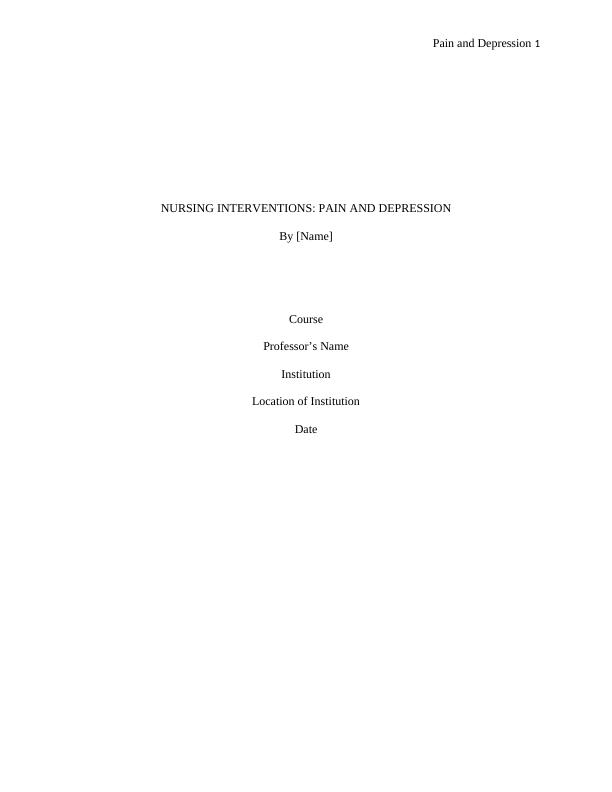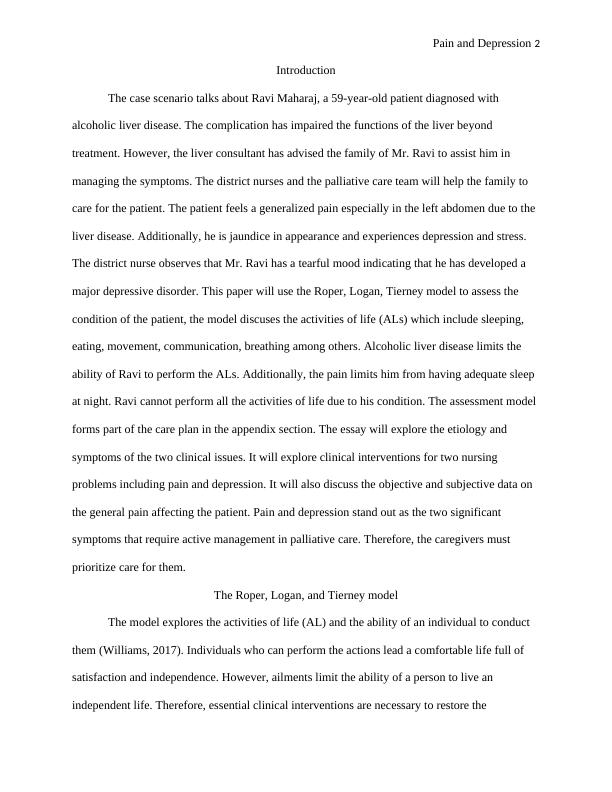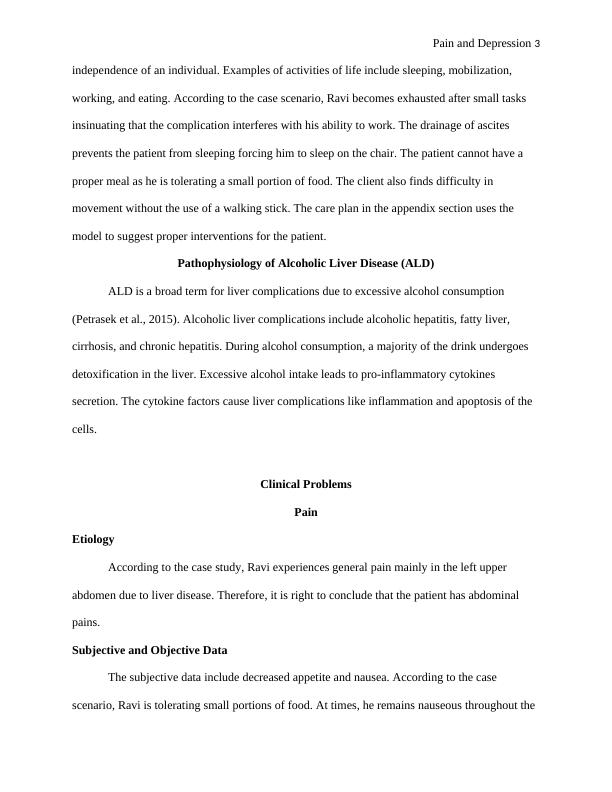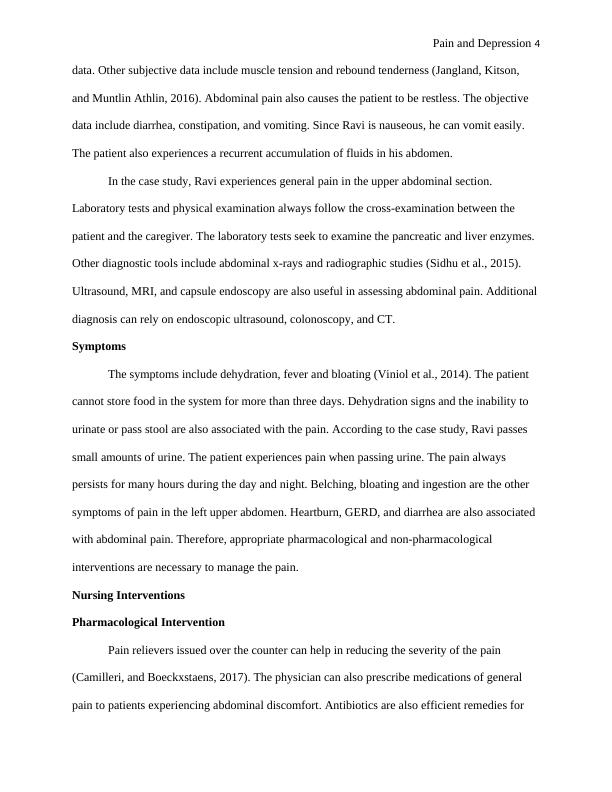Nursing Interventions for Pain and Depression in a Patient with Alcoholic Liver Disease
16 Pages4215 Words169 Views
Added on 2023-05-29
About This Document
The essay explores the etiology and symptoms of pain and depression in a patient with alcoholic liver disease. The nursing interventions for pain and depression include pharmacological and non-pharmacological interventions.
Nursing Interventions for Pain and Depression in a Patient with Alcoholic Liver Disease
Added on 2023-05-29
ShareRelated Documents
End of preview
Want to access all the pages? Upload your documents or become a member.
Comprehensive Assessment and Nursing Interventions for Alcoholic Liver Disease
|26
|5689
|225
Comprehensive Assessment and Care Plan for Nursing Patients with Alcoholic Liver Disease
|23
|6102
|323
Comprehensive Assessment and Nursing Interventions for Community-Based Palliative Care: A Case Study of Ravi Maharaj
|27
|6250
|297
Critical Analysis on Liver Cirrhosis Nursing Care
|19
|5446
|487
Reflective Journal on Roper Logan and Tierney Model of Care and Clinical Reasoning Process
|6
|1706
|231
Complex Care: Critical Analysis of Nursing Problems and Care Plan for Mr. Sylvester Charles
|6
|1096
|98




